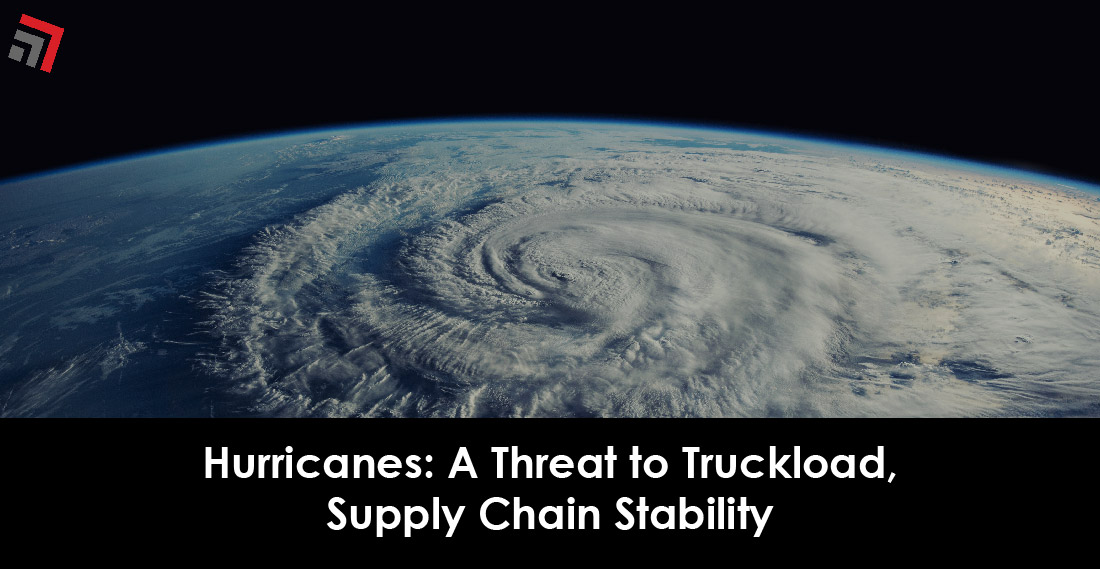So far, the summer of 2024 has been headlined by two hurricanes—Beryl and Debby, both of Category 1 strength. The former, Beryl, slammed into Texas’ Gulf Coast in early June, flooding and cutting power to major population centers near the shoreline, including Houston. While the latter, Debby, breached Florida’s northern Gulf Coast earlier this week and proceeded to crawl across the U.S. Southeast, delivering historic rainfall and formidable winds.
Both storms are contributors to this year’s active hurricane season in the Atlantic Ocean. As both Beryl and Debby have proved, these foreboding storm systems can uproot regional supply chains, shutter trade hubs, and immobilize truckload freight movement for days, if not weeks.
As supply chain professionals catch their breath, let’s recap how hurricanes impact logistics and what government forecasters are expecting for the remainder of this year’s season.
No other event matches hurricane impact on trucking market
Generally speaking, a powerful hurricane trumps any other supply chain event when it comes to its short-term impact on the trucking market. If a hurricane is on the radar, preparations and alterations to the market occur in the weeks leading up to the severe weather event.
It is common for there to be a significant demand surge from shippers to get their freight moving before a major storm system makes landfall. As a result, rates become strikingly volatile, while capacity lurches. Hurricanes bound to the East or Gulf coasts are also likely to affect a major U.S. market as these regions of the country are densely populated, further tightening a storm’s grip over truckload conditions.
Of course, once a hurricane makes landfall, truckload movement within the storm’s path grinds to a halt. Afterward, roadways and interstates are also subject to lingering conditions, like flooding or downed trees or powerlines, which prevent vehicles from traveling onward.
Forecasters anticipate “above-normal” hurricane season
As shared in May, the National Oceanic and Atmospheric Administration (NOAA)’s Climate Prediction Center are forecasting “above-normal” hurricane activity in the Atlantic Ocean over the course of this year’s season which concludes Nov. 30.
NOAA predicts an 85 percent chance of an “above-normal” season, a 10 percent chance of a “near-normal” season, and a 5 percent chance of a “below-normal” season. NOAA meteorologists have 70 percent confidence in these ranges.
NOAA’s proclamation of “above-normal” hurricane activity translates to a forecasted range of 17 to 25 named storms (winds of 39mph or higher) occurring through the season. Of those predicted totals, 8 to 13 are forecasted to become hurricanes (winds of 74 mph or higher), including 4 to 7 major hurricanes (category 3, 4, or 5 with winds higher than 111 mph).
So far in the 2024 campaign, there have been four named storms, including hurricanes Beryl and Debby.
While there hasn’t been an update as of yet, the NOAA’s Climate Prediction Center may revise its original forecast if it finds it necessary.
Even though it’s already been an active summer for Atlantic storm formation, the infamous “peak” of hurricane season occurs between late August and mid-October. In other words, supply chain professionals should remain diligent as even larger hurricanes may brew later in the fall.
Is your supply chain prepared in the event of a hurricane?




Recent Comments